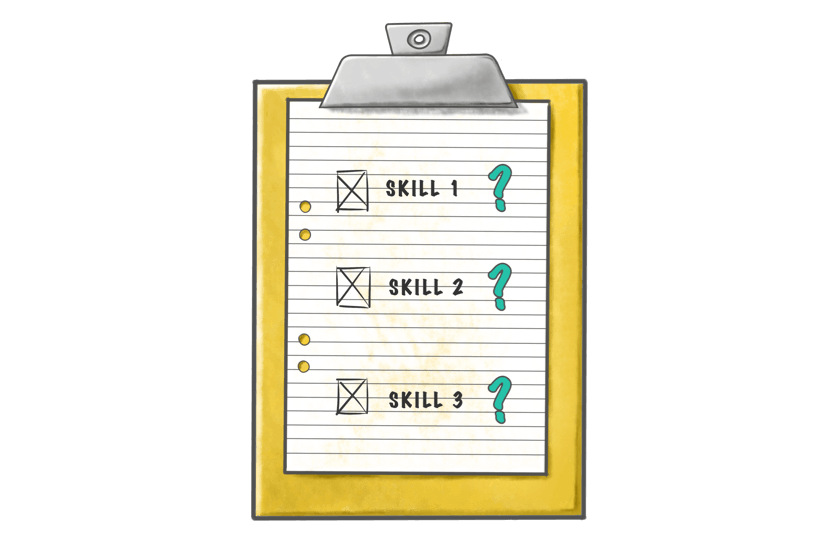
When it comes to customer service, competence is just the minimum viable product. You need more than just the technical capabilities to serve and solve the customer’s problems. That “more” is the personal connection between customer and customer service. An interaction may be objectively perfect: the customer called, you fixed their problem, they went home. But between the lines, the connection is missing.
As nebulous as the concept of “emotional connection” is, there’s actually a handy little formula you can use to create it and push your service that step further. That formula is called “Acknowledge, Align, Assure”.
What is “Acknowledge, Align, Assure”?
Acknowledge, Align, Assure (The “3 A’s”) is a three step customer service process which Apple employees live and breath and serve by. It can be applied to pretty much any problem, scenario, or circumstance a customer can throw at you. To illustrate this approach, we're going to use a simple scenario in the context of call-centres. We’re focusing on call-centres because:
- By the time someone calls you, they’re already frustrated and/or angry, so building that connection, showing the customer you’re on their side as quickly as possible is crucial.
- A phone call is less personal than face-to-face service, which makes it easier for the customer to depersonalise you, and once again important for you to break past the impersonal instantly.
Here we go:
Scenario: Somebody has called you up. They’re angry. “Your stupid website won’t let me log in even though I keep entering my password! It keeps telling me it’s wrong but I know it’s right!!”
Okay, first thing you do is take a breath. Then, we apply the 3 A’s:
1. Acknowledge
Don’t just rush in and fix the problem. Take a beat, a breath, and acknowledge that what they’re experiencing is actually a problem. Don’t lead with “I’ll send you a link to reset your password.” Lead with:
“I’m sorry to hear you’re having trouble logging in.”
It might seem more efficient to just move straight in to resolving the issue, but it’s also less personal. To the customer, indifference is worse than blatant rudeness, as people are more likely to leave a business if they’re treated indifferently than if they’re treated rudely. Acknowledging the problem, making the customer feel heard, is your number 1 priority.
2. Align
The next step in our scenario is to align ourselves with the problem the customer is experiencing. This is where you move the situation from the customer versus you, to you and the customer versus the problem. So, to follow on from what we hypothetically said above, our next statement would be:
“I know how frustrating this can be - I’ve had a similar problem when logging into my emails before - you’ve got better things to do than having to call me, I’m sure”
There you go, you’ve placed you and the customer on the same team. You’re both human, you both struggle with the rigidness of technology. By aligning yourself with their problems you’ve shown that not only are you a person, you’re a person on their side.
3. Assure
Finally, you have to assure the customer that you’ll fix their issue promptly, or, if you’re unable to, you’ll pass it on to the right people. For example:
“Let me assure you I will get this fixed for you on this call. I can send you a link to reset your password, and you’ll be able to log in again momentarily.”
This is the step you might have wanted to skip to at the start - the part where you actually fix the problem. Try to put some form of time line in here - if a problem can be solved momentarily, let them know. If it’s going to take longer, let them know that, too. It puts their mind at ease, lets them know how long its going to be before they’re problem-free once again. It also gives them a timeline of when they may need to seek help again, in case the fix you tried to apply hasn’t quite worked.
So, that’s it. It’s a formula, but not one of those horrible Pythagorean, or Quadratic ones. It’s as simple as they come. To recap, here it is all together and colour coded:

Why?
Acknowledge, Align, Assure is a formula that doesn’t feel formulaic. This is important, as no one calls to speak to a robot, and no one wants to talk to someone who doesn’t care about what they’re saying. In this way, the 3 A’s will have you engineering meaningful customer interactions every single day.
If you want know how adaptive mobile technology can help you train your staff to use the Acknowledge, Align, Assure formula, call Mark on 0401 872 305 or head over to our contact us page.
To learn about the big impact little bites of learning can have, download our microlearning white-paper.













































































































